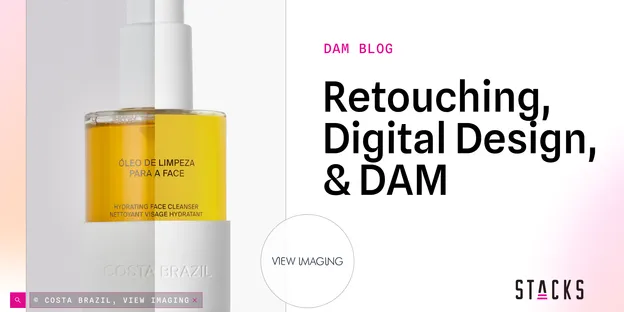Picture this: it’s four o’clock on a Thursday afternoon. Your workday is wrapping up and all you can think about is getting out of the house or office to spend some time outside with family or friends. As you clear out your inbox for the day your phone rings. Although the number is unfamiliar, it’s from your area so you answer, only to be greeted with, “I’m calling in regards to your vehicle’s extended warranty.” While the call doesn’t take up much of your day, receiving spam calls is always annoying.
Odds are that something like this happens to you at least once a day. Business Insider found that 46% of Americans receive robocalls every day. Take into account spam emails, promotional texts, ads on YouTube or other social media, and LinkedIn messages from wannabe vendors, and the number of irrelevant and negative touchpoints we all experience becomes staggering. We’re all so accustomed to this overwhelming wave of meaningless content, that we’re pleasantly surprised when relevant, interesting content makes its way into our news feeds and inboxes.
This type of marketing, in which brands use content to build trust and connection with consumers by providing value instead of directly selling their products or services, is called “Content Marketing.” The Content Marketing Institute (CMI) has found that brands are investing more effort in the creation of content and increasing their overall content marketing budgets. According to surveyed marketers, it helps them create brand awareness, build credibility and trust, and educate consumers.
Where Digital Asset Management and Content Marketing Meet
Content marketing aims to make content the profit center of your business, driving sales and decreasing costs by building loyal customer relationships. This is done by consistently placing content that is valuable to the consumer, whether it be blog posts, webinars, infographics, case studies, or videos, in front of them with no strings attached. When consumers trust that you aren’t just trying to sell them something they aren’t sure they need, they’re more likely to turn to you repeatedly. This loyalty directly leads to increased brand awareness and, therefore, sales.
This content-driven approach can apply to all your marketing efforts in today’s consumer environment. Social media marketing, search engine optimization (SEO), and public relations all depend on strong content to connect with consumers. With this in mind, properly managing and maintaining your organization’s content and the digital assets it comprises, is vitally important. Since organizations are investing in creating more content, they must develop a scalable and understandable program to organize and manage it. Below, we outline how digital asset management (DAM) can help empower your marketing teams in their content marketing efforts.
Using DAM to Empower Content Marketing
- Keep Track of What Goes Where
With the growth of technology and social media, there are multiple channels for your marketing department to manage and maintain. Each of these channels requires specific types of content that target particular segments of the market. For channels such as your website, only assets in certain formats work. On your Instagram page, you may have very strict guidelines regarding the colors and styles of content. Webinars and videos may need to be edited differently for use on separate video platforms like YouTube or Vimeo. Using the principles and processes of digital asset management internally, your team can easily track what assets are available for use on which channels. These standards include using metadata, folder hierarchies, and permissions that allow specific teams access to only the assets for their channel.
- More Volume, Less Search Time
For content creators and managers, growth in the business or expansion into new markets can be daunting. More channels to manage, content to create, and consumers to reach, can seem overwhelming. In many organizations without a DAM program, growth also means that the volume of content to sift through when searching for specific assets is bigger, increasing search time. Once a DAM program is implemented, however, growth becomes something to celebrate. Using processes, standards, platforms, and people, relevant assets are organized and easy to find. This means that each marketing team can quickly find the content they need and deploy it to keep the business growing.
- Single Source of Truth
Odds are that your organization, like many others, uses a multitude of systems throughout the lifecycle of a content marketing campaign. These include content management systems (CMSs), product information management (PIM) systems, and marketing resource management (MRM) systems. Improved software has made these systems robust on their own, but implementing a DAM platform to house and distribute content for each of these independent systems makes them all the more powerful. Many DAM technologies have integrations that allow your team to use the DAM as a single source of truth while also adding some juice to your other systems. Some organizations even use a Headless DAM to automatically populate these systems with relevant content.
- All Content Tells the Same Story
One key to effective marketing is brand storytelling. Each piece of content a consumer sees tells them something about your brand, and good marketers know how to weave each piece together to tell a compelling story. With so many channels and teams that are likely to be siloed, it can be easy to tell conflicting stories. This leads to a confused consumer that isn’t engaged with your brand. To ensure that all your content tells the same story, have every team pull approved content directly from the same single source of truth. There, you can ensure consistency by managing all your assets in the same place.
Conclusion
Content marketing is becoming a requirement in today’s market, but without proper processes in place to manage your content, it can be hard to get your efforts off the ground. If you want to empower your marketing teams as they use content, build a scalable DAM program. If you need guidance, contact Stacks! Our experienced DAM Architects and Librarians have worked with both big and small brands to help them more effectively show their stories.




